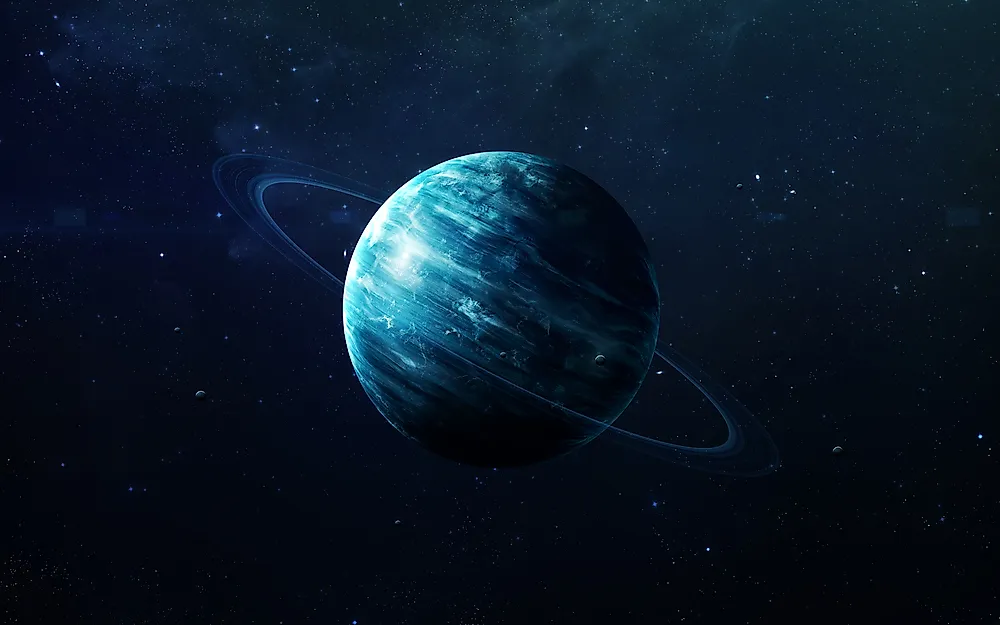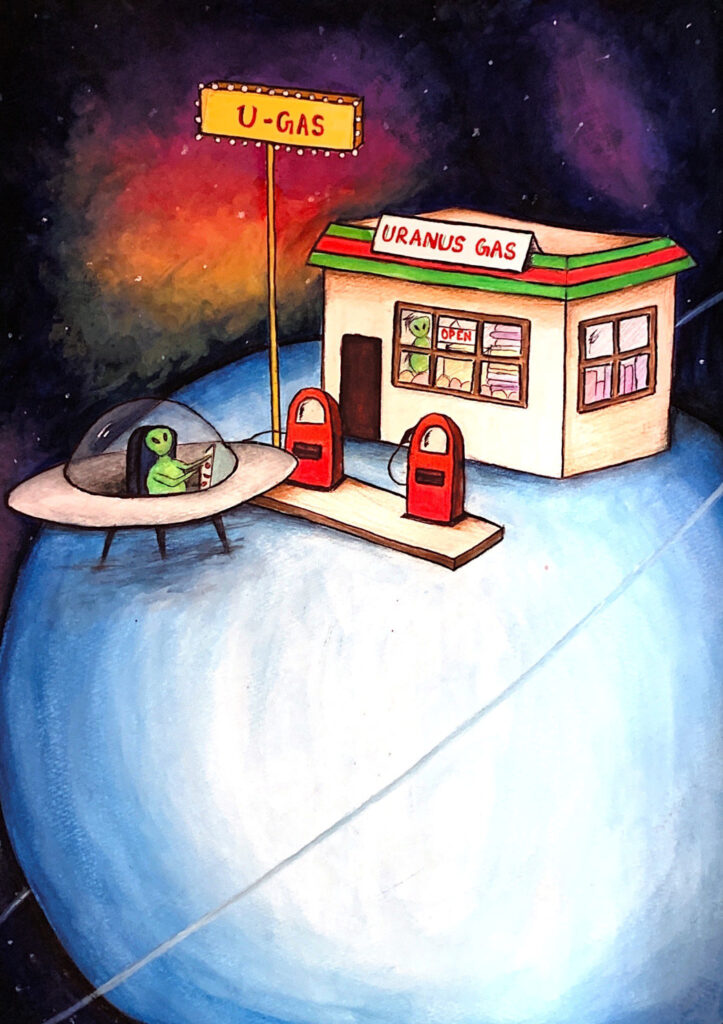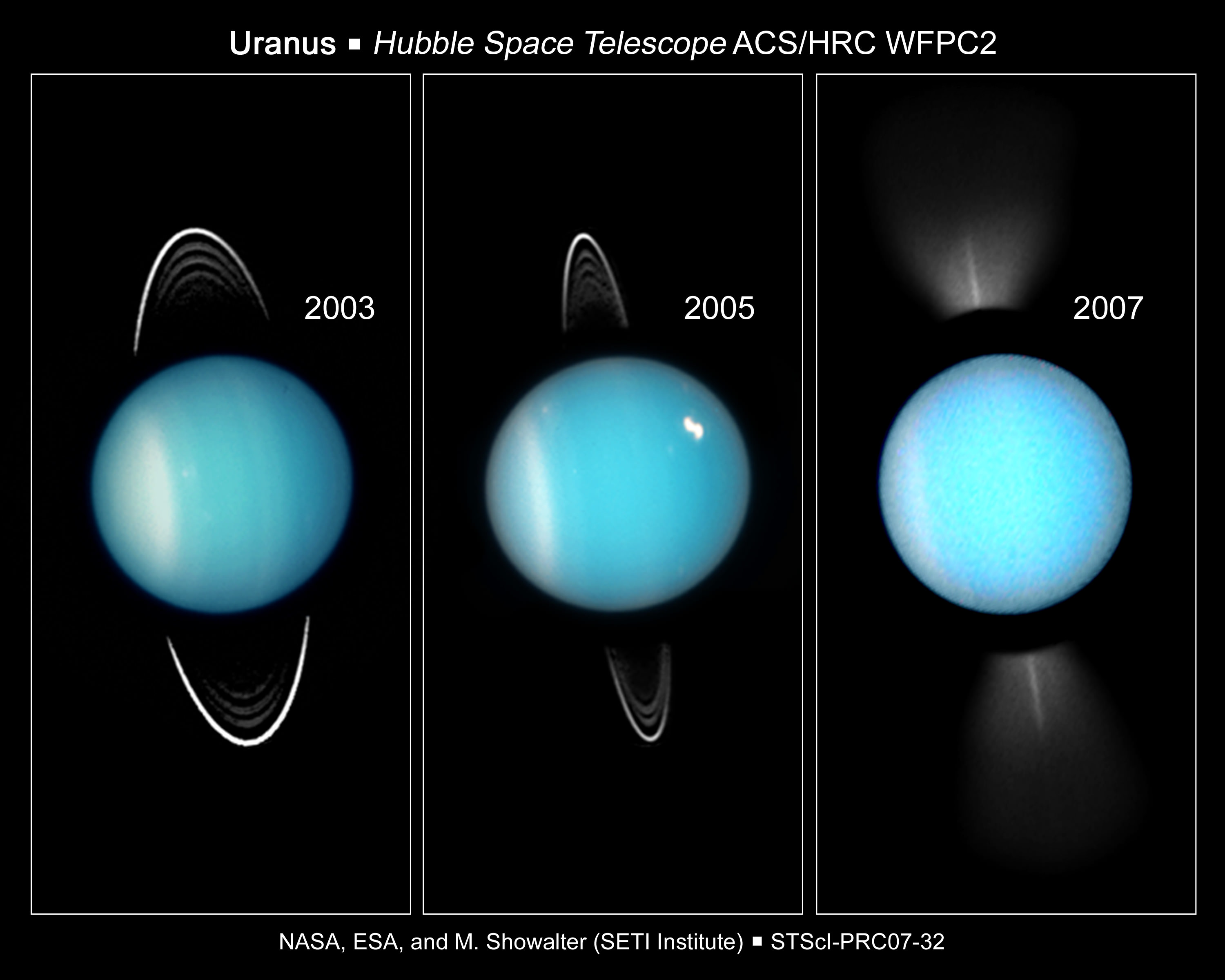Is Life Possible on Uranus?
Uranus, the seventh planet from the Sun, presents a fascinating but challenging environment for the possibility of life as we know it. Its extreme conditions, unique composition, and distance from Earth make it an enigmatic target for astrobiologists.
Unfavorable Atmospheric Conditions:
Uranus has a thick and turbulent atmosphere composed primarily of hydrogen and helium, with trace amounts of other gases. The atmospheric pressure is immense, reaching over 100 times that of Earth’s. The temperature at the cloud tops ranges from -220 to -200 degrees Celsius (-364 to -328 degrees Fahrenheit), far too cold for liquid water to exist.
Chemical Composition:
In addition to its extreme temperature and pressure, Uranus’s atmosphere is rich in ammonia, methane, and hydrogen sulfide. These gases are toxic to most known life forms on Earth. However, it’s possible that certain organisms have evolved to tolerate or even utilize these substances in their metabolism.
Long Rotation Period and Tilt:
Uranus has an unusual rotation period of about 17 hours, but its axis of rotation is tilted by approximately 98 degrees. This means that one pole of the planet faces directly at the Sun for most of its orbit, while the other pole experiences prolonged darkness. These extreme light-dark cycles would be difficult for any life form to adapt to.
Distance and Radiation:
Uranus is located about 2.8 billion kilometers (1.8 billion miles) from the Sun, making it much colder and receiving less light than Earth. Additionally, it is bombarded by high levels of cosmic radiation, which could damage or kill any exposed life forms.
Theoretical Possibilities:
Despite the harsh conditions on Uranus, some scientists speculate that certain types of microbial life could potentially survive in its atmosphere or rocky core. These organisms might be extremophiles, adapted to withstand extreme temperatures, pressure, and chemical environments. They could exist in underground water reserves or under the planet’s icy surface.
Exploration and Future Prospects:
To date, no spacecraft has landed on or sent probes directly into Uranus’s atmosphere. However, missions like the Voyager 2 flyby in 1986 and the upcoming Uranus Orbiter and Probe mission planned for the 2030s could provide valuable data on the planet’s conditions and potential for life.
Conclusion:
While the prospect of life on Uranus is intriguing, it remains highly speculative. The extreme conditions and lack of direct exploration make it difficult to assess the planet’s habitability with certainty. Further scientific research and space missions are necessary to unravel the true nature of Uranus and its potential to harbor life.
Known for its cold and windy environment, Uranus is an ice giant surrounded by 13 faint rings and 28 small moons
|
June 11, 2024
 Is life possible on Uranus?
Is life possible on Uranus?
Uranus remains an inhospitable planet due to its harsh conditions, including extreme temperatures, high pressure and volatile materials.
With no real surface and an atmosphere that can destroy metal under enormous pressure, the prospects for life seem bleak.
However, recent research from NASA suggests that there is a glimmer of hope in the moons of Uranus.
In particular, Ariel, Umbriel, Titania and Oberon could harbor deep oceans that could support life.
Known for its cold and windy environment, Uranus is an ice giant surrounded by thirteen faint rings.
Its unique rotation, almost perpendicular to its orbit, makes it appear to spin sideways, resembling a rolling ball orbiting the sun.
Uranus was discovered in 1781 by astronomer William Herschel and was initially mistaken for a comet or star.
However, later observations by Johann Elert Bode confirmed its status as a planet.
Despite its enormous size, four times larger than Earth, Uranus’ harsh conditions make it unsuitable for life as we know it.
With an equatorial diameter of 31,763 miles (51,118 kilometers) and an average distance of 1.8 billion miles (2.9 billion kilometers) from the Sun, the planet’s extreme environment poses significant challenges to potential inhabitants.
Uranus has 28 known moons, uniquely named after characters from the works of William Shakespeare and Alexander Pope.
While the composition of the inner moons includes roughly equal parts water ice and rock, the outer moons remain shrouded in mystery, likely captured asteroids.
Furthermore, Uranus itself may not be conducive to life, but the possibility of a habitable environment on its moons offers a tantalizing prospect for further research and scientific investigation.
.
Is Life Possible on Uranus?
Uranus, the seventh planet from the Sun, is a fascinating world that has long intrigued scientists. With its extreme cold, high winds, and unique atmospheric composition, it presents a daunting environment for any known form of life. However, recent research has shed new light on the possibility that life may exist on Uranus. Studies have shown that the planet’s atmosphere contains organic molecules, which are the building blocks of life as we know it. Additionally, scientists have identified regions of Uranus that may have liquid water beneath its icy surface. Liquid water is essential for life as we know it, and its presence on Uranus suggests that there may be habitable environments within the planet’s interior. However, the extreme cold and high pressure at these depths make it unlikely that life could survive in any form resembling terrestrial organisms. Instead, scientists believe that any life on Uranus would likely be extremophilic, adapted to survive in extreme conditions that would be lethal to most Earthly life forms. These potential life forms could include microbes that thrive in the planet’s icy oceans or in the organic-rich atmosphere. The search for life on Uranus is still in its early stages, and there is much that scientists do not yet know about the planet’s interior environment. However, the recent discoveries have sparked excitement and speculation, raising the possibility that life may exist in even the most unlikely of places.


























